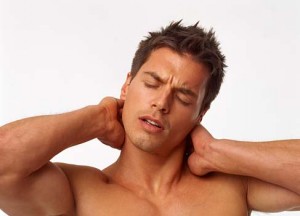Dear Davey,
A day after I exercise, I tend to get really sore. Is this bad? Does it mean that I’m pushing myself too hard or that I need to change something?
Thanks,
Brian
 Dear Brian,
Dear Brian,
When people exercise, there are two types of soreness: Delayed Onset Muscle Soreness (called DOMS) and injury-related soreness. DOMS is good, injury-related is bad, and it’s very easy to tell the two apart.
DOMS occurs 12-48 hours after you complete your workout. It sounds like the type of soreness that you’re describing, and it’s often associated with a change in your workout program, increased intensity, etc. When you finish your workout, you don’t feel it. But in the subsequent hours, it slowly sneaks up on you.
This type of soreness is actually good. It’s part of a process that leads to muscle growth and increased strength as your body adapts to your workout regime.
There’s no simple way to treat DOMS - the best advice is simply to rest and recover until it passes. Some people have reported that gentle stretching or massaging seems to help.
Most importantly, do not exercise the sore muscle groups until they recover. Remember, the soreness is from muscles that are rebuilding - you need to let them build up before you break them down again or else you will not see results or increases in strength. Moreover, you may injure yourself.
Speaking of injury, any soreness as the result of injury is markedly different from DOMS. For one, soreness as the result of injury often hits sooner - if not instantly. And, wherein DOMS soreness is generally symmetrical (i.e., in both legs a day or two after doing squats), injury-related soreness is asymmetrical (i.e., in just one leg). Stop exercising if you have an injury and seek medical attention.
So, soreness can - and usually is - a good thing. Just make sure to give your body time to recover!









Thanks! That really helped. =D
Look at the soreness (DOMS, not injury) as sign that you did something good. It should resolve within 48-72 hours. If not it is a sign of strain. Too much soreness chronically can be a sign of overtraining. Take a break of a week after 12 weeks of working out.
Warming up before you work out and slow static stretching after (never before) will help minimize soreness.
Thank you for all this info
You are welcome! 😀
ahhhhhhhhhhh now I know why my elbows are killing me… I hope they’re be good after tomorrow. I wonder if I can put some ice over them do decrease the pain. Anyway, I’ll take a cold shower, I hope it helps.
That is very fascinating, You’re an overly professional blogger.
I’ve joined your rss feed and sit up for seeking extra of your magnificent post.
Additionally, I’ve shared your website in my social
networks